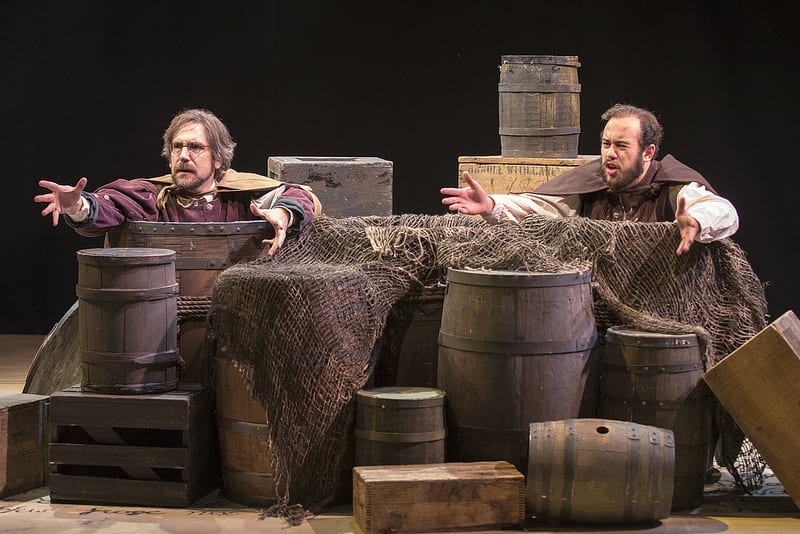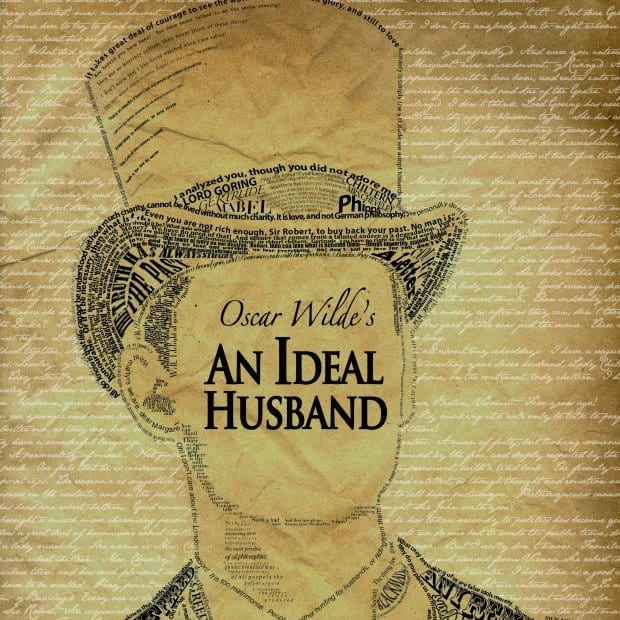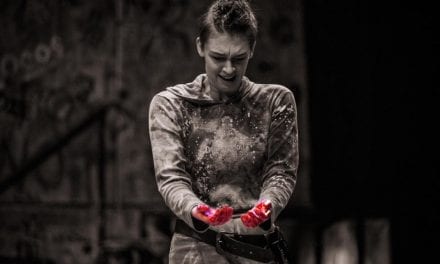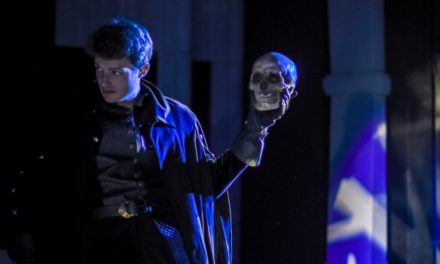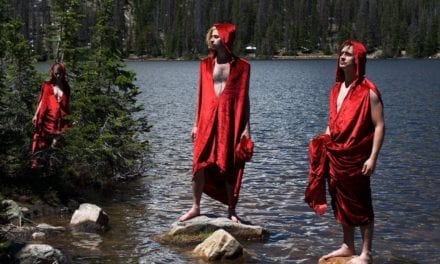SALT LAKE CITY — It’s refreshing as a reviewer to be able to see a show that doesn’t often grace our Utah stages. I don’t really mind seeing Joseph and the Technicolor Dreamcoat or The Music Man yet again, but watching a new or less-produced show is always a nice change . I thus went into Tom Stoppard’s Rosencrantz and Guildenstern Are Dead with fresh excitement and hope that it was a well-done production. Studio 115 delivered.
The play focuses on Rosencrantz and Guildenstern, two minor, forgettable characters in William Shakespeare’s Hamlet. In an interesting play-within-a-play setup—Tom Stoppard’s work becoming a footnote to the bigger play of Hamlet—the audience remains with Rosencrantz and Guildenstern both off and on Shakespeare’s original script. The result is an absurdist serio-comedy in which Rosencrantz and Guildenstern participate a little in the events of Hamlet but are mainly just like two bored kids with an inclination to half-baked philosophy and an obsession with death.Obviously, the success of a production of this show rests heavily on the two titled leads—and Studio 115’s Mark Fossen as Rosencrantz and Mark Macey as Guildenstern both performed handsomely. Fossen and Macey worked well with each other and had a natural give-and-take in their chemistry, comedy, and timing. Fossen’s Rosencrantz had a delightful strained innocence to him—a quality that played nicely against Macey’s more worldly, degraded, but overall childish Guildenstern. Both performed with charisma and confidence, sharing the spotlight and enhancing each other’s performance. My favorite moments between the two include their confused, fun game of Questions in which both move as players on a board; the fast-paced but well-played discourse on their shared bed aboard the ship at the beginning of act 3; and the moments throughout the show where the two begin to pace in a tight circle about each other, face to face, debating one thing or another.
Director Jerry Rapier had a formidable task in staging and interpreting this play, yet he did a commendable job. The pacing of the actors’ lines—which are more often than not almost on top of each other—was evidence to Rapier’s deliberate direction. Also, since the majority of the play is Rosencrantz and Guildenstern simply talking to one another, Rapier’s blocking choices broke up potentially monotony. Rosencrantz and Guildenstern use the space beautifully—from pacing with each other, to taking positions apart, and using varied levels—laying down, standing, half-sitting, leaning.
The set design by Matthew Windham was simple but meaningful. The back of the stage was a wall of overlarge, well-used books and the floor was painted to appear like some kind of ancient script—suggesting the fact that Rosencrantz and Guildenstern are trapped within literature (in this case, Hamlet). On stage, there was simply a handcart/table, held in place by two weights. The stage was thus barren—aiding the feeling of entrapped boredom that the main characters describe—yet workable with the set piece provided. When the play takes place aboard a boat in a latter act, a hoard of barrels with fishing nets and ropes suggest the nautical environment. Costumes (designed by Megan Jensen) were time-period appropriate to Shakespeare’s time and tended in muted earth tones. Rosencrantz and Guildenstern’s costumes were similar and almost interchangeable—an artistic element which added to the fact that the characters themselves forget which man is which.
Overall, this production was an experience I thoroughly enjoyed, from laughing at both high- and low-brow jokes to getting completely spooked by thinking about the horrible concept of being trapped in a coffin alive. This play is worth a see for Hamlet lovers, modern theater aficionados, and the theater-goer who just wants to expand his or her viewing repertoire. If you attend, you will be treated to a heady night of depressing lows and giddy highs, accentuated by the melding of theater old and new—truly a theatrical journey worth having.

